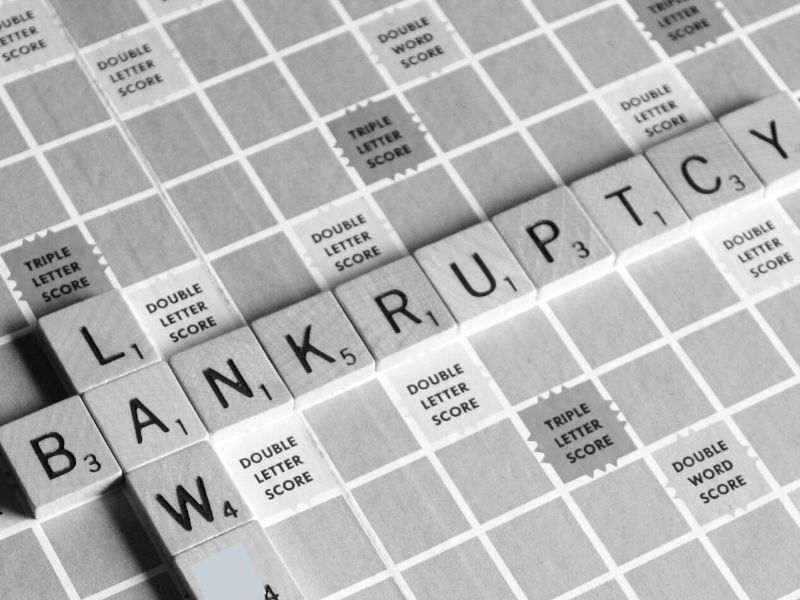A Bankrupt No More (Part 2) - Discharge of a Bankruptcy Order
by Abigail Shobana Numbalker & Sean Tan Yang Wei ~ 8 September 2022

Contributed by

Abigail Shobana Nimbalker
Email Me | View Profile

Sean Tan Yang Wei
Email Me | View Profile
Introduction
There are two ways to remove your bankruptcy status - by way of a discharge application or annulment application. There are three methods of discharge that a bankrupt may opt for: (i) discharge by way of a court order (ii) an automatic discharge and (iii) by way of a certificate from the Director General of Insolvency (DGI).
In Part 1 of our “A bankrupt no more” series, we explored the mechanism and the considerations the court would have to take into account when applying for a discharge via a court order.
For the purposes of the article herein, we will be focusing on automatic discharges and discharges by way of a certificate from the DGI.
Automatic Discharge
An Automatic Discharge is a mode of discharge from bankruptcy that is available upon the expiration of 3 years from the date of the submission of the statement of affairs. The DGI only has a window of 6 months before the expiration of 3 years to issue the notice of discharge.
a. Director General of Insolvency (“DGI”) considerations
Section 33C(1) of the Insolvency Act 1967 (“the Act”) in itself contains the following two limbs, which a bankrupt must first satisfy before an automatic discharge can be issued:
- He has achieved his target contribution of his provable debt (the “1st limb”); and
- An account of moneys and property has been submitted to the DGI (the “2nd limb”).
While the 2nd limb is clear, the 1st limb is very much reliant on the discretion of the DGI. In this regard, section 33C(2) of the Act provides the following factors for the consideration of the DGI in the issuance of a notice of the discharge:
- The provable debt of the bankrupt;
- The current monthly income of the bankrupt;
- The extent to which the bankrupt’s spouse may contribute to the maintenance of the bankrupt’s family;
- The monthly income that the bankrupt may reasonably be expected to earn over the duration of the bankruptcy;
(a) The previous and current monthly income of the bankrupt;
(b) The educational and vocational qualifications, age and work experience of the bankrupt;
(c) The range of monthly income earned by persons who are employed in occupations, positions or roles similar to that in which the bankrupt is, or can be expected to be employed;
(d) The effect that the bankruptcy may have on the bankrupt’s earning capacity or other income;
(e) The prevailing economic conditions; and
(f) The period of time during which the bankrupt is likely to be capable of earning a meaningful income;
- The reasonable expenses for the maintenance of the bankrupt and his or her family; and
- The bankrupt’s property that may be realised during the period of three years.
In the event that there is no opposition to the DGI’s notice of discharge, the DGI will issue a certificate of automatic discharge to the applicant.
b. Opposing the discharge
A creditor may oppose the automatic discharge within 21 days from the date the DGI’s notice of discharge is served on him via an application to the court for an order to suspend the discharge. However, a creditor can only object to an automatic discharge on the following grounds pursuant to section 33C(4) of the Act:
- The bankrupt has committed an offence under the Act or under section 421, 422, 423 or 424 of the Penal Code;
- The discharge under this section would prejudice the administration of the bankrupt’s estate; or
- That the bankrupt has failed to co-operate in the administration of the estate.
Upon the creditor’s application, the court would proceed to hear the DGI and the bankrupt before making an order on the application. The court would only be allowed to make the following orders:
- 1. Dismiss the application and approve the discharge, for which the DGI would then issue a certificate of automatic discharge; or
- Suspend the discharge for a period of 2 years, and:
(a) The bankrupt would be ordered to continue to fulfil his duties and obligations under this Act during that period; or
(b) The bankrupt will be discharged automatically at the end of the 2 years’ period.
Certificate of DGI
A Discharge Application by way of a DGI’s Certificate is available after a period of 5 years from the date when the bankruptcy order lapses.
a. DGI considerations
Since the Act is silent as to the factors that would be considered by the DGI, one can only infer from common law as to what those factors might be. Khoo’s Law and Practice of Bankruptcy highlights examples of what has been taken into consideration by the DGI:
- The cause of bankruptcy: where the bankruptcy was brought about by the bankrupt’s own fault such as gambling, fraud or imprudent spending, the application will be dismissed.
- The age or the health of the bankrupt: bankrupts who are more than 65 years of age or who are of poor health are likely to be discharged.
- The assets of the bankrupt: the application may be allowed only if the assets of the bankrupt have been recovered for distribution.
- The conduct of the bankrupt: the DGI may consider whether the bankrupt has been co-operative in the proceedings and prompt with payment, as directed by the DGI and whether he has committed any bankruptcy offences or contempt of court.
- The duration of the bankruptcy.
- Whether further administration of the bankruptcy will generate additional proceeds for the creditors.
In the event that there is no opposition to the DGI’s notice of discharge, the DGI will issue a certificate of discharge to the applicant.
b. Opposing the discharge
A creditor may oppose this mode of discharge within 21 days from the date of service of the DGI’s notice of discharge. The creditor would have to submit his objection in the form of an application to court along with the grounds of his objection. However, a creditor cannot object to this mode of discharge application where the bankrupt is:
- Adjudged bankrupt by reason of him being a social guarantor;
- Registered as a person with disability under the Persons with Disabilities Act 2008;
- A deceased bankrupt; or
- A bankrupt suffering from a serious illness certified by a Government Medical Officer.
Further, in the case of Asia Commercial Finance (M) Bhd v Bassanio Teo Yang [2009] 9 CLJ 413, the court held that the DGI’s discretion on this mode of discharge can only be challenged in the event that there is clear evidence of abuse.
An example of evidence of abuse can be seen in the case of Re Benny Ong Swee Siang [2016] 3 CLJ 1001. In this case, the DGI had only made two attempts to contact the bankrupt and had failed to reach him. The DGI subsequently issued the certificate of discharge on the grounds that the debtor had been bankrupt for 17 years and was already 61 years of age. However, the creditors objected on the ground that the bankrupt had always remained contactable. Upon learning that the bankrupt’s estate had never been administered despite the fact that their whereabouts were traceable, the court found that the DGI had failed to put in sufficient effort in administering the bankrupt’s estate.
Upon the creditor’s application to challenge the DGI’s notice of discharge, the court will hear the DGI and the bankrupt before making an order on the application.
Similar to an automatic discharge, the court’s decision is limited to the following orders:
- Dismiss the application; or
- That for a period not exceeding 2 years, a certificate of discharge shall not be issued by the Director General of Insolvency.
Effect of Discharge
Regardless of the mode of Discharge Application used, the effects are the same across the board. A discharge order or certificate releases the bankrupt from all debts provable in bankruptcy except for:
- debts due to the Government of Malaysia or to any State;
- debts with which the bankrupt may be chargeable at the suit of -
(a) the Government of Malaysia or of any State or any other person for any offence under any written law relating to any branch of the public revenue; or
(b) any other public officer on a bail bond entered into for the appearance of any person prosecuted for any such offence;
- any provable debt which the bankrupt incurred in respect of or forbearance in respect of which was secured by means of, any fraud or fraudulent breach of trust to which he was a party; and
- any liability in respect of a fine imposed for an offence.
The implication of this is that, even if you have been discharged as a bankrupt, you are not exempted from the debts that have incurred after the bankruptcy or the debts that have not been proven during your bankruptcy period. Further, if you have not settled your debts with a secured creditor, do note that the secured creditor may recover the full sum of the debt from a debtor excluding interest, during the bankruptcy period.
Therefore, where able, individuals seeking to dispose of their bankruptcy status are often advised to opt for the Annulment Application instead of the above-mentioned Discharge Application method. We will explore the Annulment Application method in Part 3 of this series.